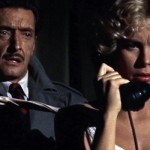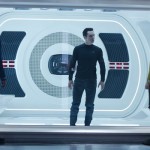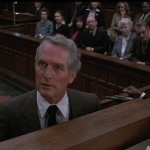Gravity Review
“I hate space.”
That quote represents a brief moment of levity in Gravity, an otherwise harrowing thriller, and it perfectly sums up its lead character, rookie spacewalker Dr. Ryan Stone (Sandra Bullock). The film itself—or at least the stakes from which every bit of tension is derived—is better summarized by a quote that comes earlier in the film. Just seconds in, white text on an all black screen tells us “Life in space is impossible.” That it is.
Gravity‘s premise is simple: After being showered with debris, Stone is separated from her shuttle and her crew. She’s literally floating through space—spinning without direction or control—until her crewmate, Lt. Matt Kowalski (George Clooney), catches up with her (he was luckily attached to a jet pack when disaster struck). The two of them, tethered together, head for the safe confines of the Explorer, but must come up with a new plan when they find it completely destroyed.
The simplicity of the premise allows Cuaron and his fellow screenwriter/son, Jonas, to come up with creative—and visually unparalleled—examples of space-set masochism. That is to say the Cuarons throw mountains of trouble at Kowalski and Stone—rapidly depleting supplies of oxygen, fires, broken equipment, and debris storms that occur at regular 90-minute intervals.
And none of this is counting for the emotional component that comes with fighting for one’s life hundreds of miles above the surface of the Earth. There will be those who feel Stone’s backstory and eventual growth is hackeneyed, and those individuals wouldn’t necessarily be wrong. But there’s something comforting about this special effects feast’s familiarity. Gravity is an intense experience that will glue you to your chair. Without attempting to engage you on something other than a visceral level would be mistake and would make this film colder than its setting. Hem and haw if you must about the bluntness of it all (the 3D tear floating at you, for example), but I was completely taken by Stone and her story.
It helps, of course, when you have a fine actress in top form. Sandra Bullock has literally never been better than she is here. One can only imagine the physical demands of the performance, but she’s also alone on screen for LONG periods of time. While she and Clooney (who’s his usual charming self) are tethered together, she’s reserved, frightened, and resigned to her fate (the quote that opened this review really does say a lot about this woman). But once they part ways, she empowers herself to beat the odds, and that change is one of the film’s most satisfying elements.
But the star of the film, as you might expect, is the elder Cuaron. It’s been seven years since his last (the incomparable Children of Men), and in that time, he invented technology to make Gravity work. Not content to set his tendency for long takes aside, he deemed Apollo 13‘s zero-gravity style too constraining to work with. It’s a decision that’s impossible to argue with given the results. Gravity is perhaps the best-looking movie ever set in space, and those long takes—the ones that dropped jaws throughout Children of Men—are look even better on the biggest scale.
Some credit belongs to cinematographer Emmanuel Lubezki, of course. It’s great to know the man seems primed to finally take home a well-deserved Oscar. But Gravity‘s achievement is more than any number of gold statues could state. It’s a piece of smart, entertaining, and original filmmaking that studios simply don’t go for in today’s marketplace—especially when said film has a budget on par with that of Gravity—and it’s the best case for 3D filmmaking we’ve seen so far (Avatar and Hugo included). I can’t say how well Gravity will play on your television—but the theatergoing experience was one of the best I’ve had in years and one I’ll remember for years to come.
















Pingback: Reviews: Gravity (2013) | Online Film Critics Society